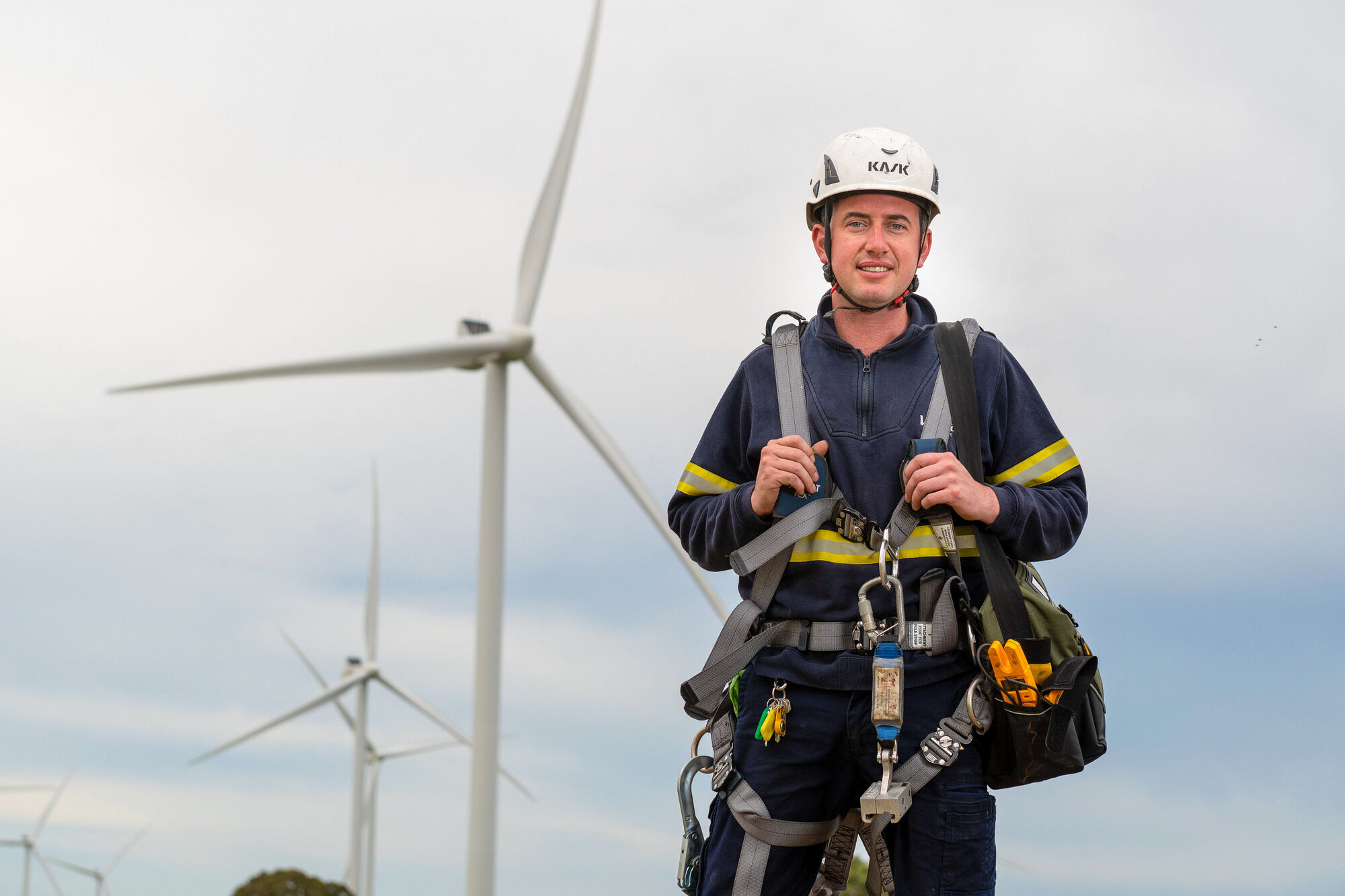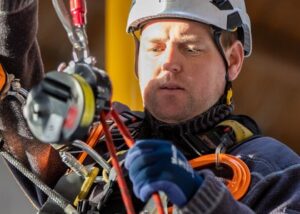A combined course to meet US standards?
STL USA has created a combined GWO Control of Hazardous Energies and Qualified Electrical Worker to NFPA 70E course to meet GWO and national requirements.
Originally developed at OSHA’s request, NFPA 70E helps companies and employees avoid workplace injuries and fatalities due to shock, electrocution, arc flash, and arc blast and assists in complying with OSHA 1910 Subpart S and OSHA 1926 Subpart K. In short, it is the industry standard for employees working with electricity and a must for wind technicians.
Alongside GWO CoHE this course ensures that employers who require CoHE and are based in the US are compliant with their duties for electrical workers.
What does the course include?
The combined CoHE course (3 days) plus a day of QEW to NFPA 70E fills any gaps and ensures compliance.
GWO CoHE electrical can also be combined with the NFPA 70E module (1.5 days).
What is NFPA 70E?
NFPA 70E training, formally known as NFPA 70E (National Fire Protection Association), focuses on electrical safety in the workplace. This training is crucial for employees who work around or with electrical systems, including electricians, maintenance workers, and other personnel exposed to electrical hazards.
The primary goal of NFPA 70E training is to teach workers how to prevent electrical accidents and injuries, such as electrical shocks, arc flashes, and arc blasts. These incidents can cause severe injuries, burns, or even fatalities. The training covers various aspects of electrical safety, including hazard identification, risk assessment, and proper use of personal protective equipment (PPE) designed for electrical work.
Participants in NFPA 70E training learn to recognize electrical hazards, assess the level of risk associated with specific tasks, and implement proper safety measures. It also includes guidelines on establishing safe working distances from energized equipment and determining the correct approach boundaries. The training emphasizes compliance with OSHA (Occupational Safety and Health Administration) standards and NFPA guidelines, ensuring that workers understand their responsibilities and rights concerning electrical safety.
Overall, NFPA 70E training equips workers with the knowledge and skills needed to minimize risks in electrically hazardous environments, fostering a safer workplace.
What is GWO CoHE?
GWO Control of Hazardous Energies training, developed by the Global Wind Organisation (GWO), focuses on the safe management of hazardous energies in the wind industry. This training is designed to educate workers in wind turbine environments on how to safely control electrical, mechanical, hydraulic, pneumatic, and other forms of hazardous energy during maintenance, repair, and operational tasks.
The training emphasizes “lockout/tagout” (LOTO) procedures, which are critical to ensuring that dangerous energy sources are isolated and controlled before any work is performed on equipment. Workers learn how to identify hazardous energy sources, follow proper procedures to de-energize systems, and apply locks and tags to prevent accidental re-energization.
Key components of the GWO Control of Hazardous Energies training include hazard identification, risk assessment, and the application of safety procedures to minimize the risk of injury. It covers personal protective equipment (PPE), safe isolation techniques, and communication protocols for safely coordinating tasks with team members.
The training aims to prevent accidents, such as electric shocks or equipment movement due to residual energy, which could result in serious injury or death. GWO standards are widely adopted by wind industry operators to ensure consistent safety practices across the globe.
How do I book?
Click the link below and talk to a member of the STL USA team to book your course.
Interested in GWO CoHE & NFPA 70E?
Talk to a member of the STL USA team to book your place.




